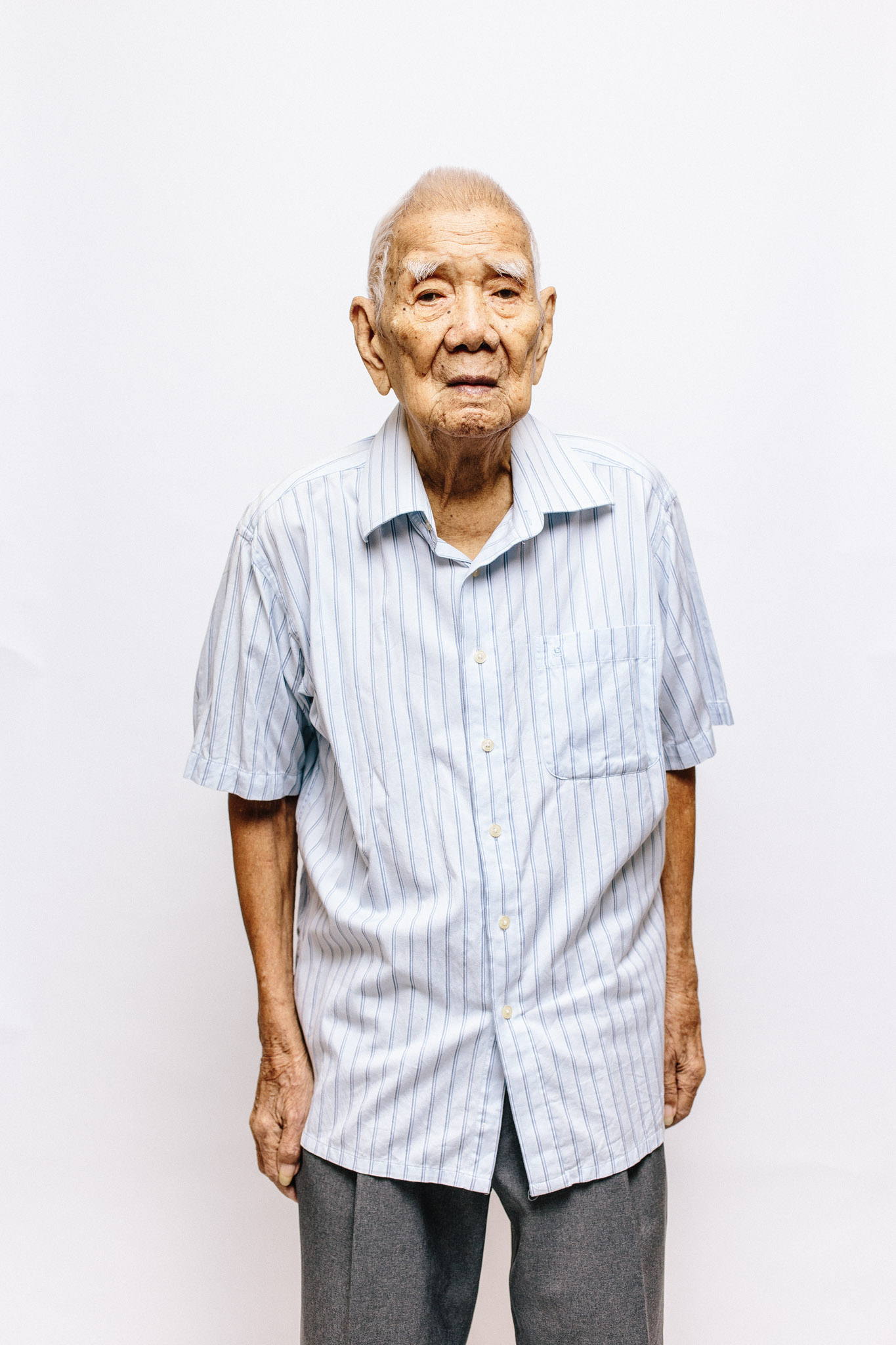SG100 - Goh Beng Seng
You are all very lucky
"When the Japanese came, I decided to become my own boss. I had two other partners, but they have both passed away.
When I was young, only when you work, then can you get to eat. If you don’t work you have nothing to eat. Young people of this era do not have much worries, you are all very lucky.
In China, you can work and earn for half a year and then enjoy the other half of the year. I wanted to grow old in China. Here, even when you are old, you have to keep working until you die. Money runs out fast in Singapore.
I prefer taking the ship to travel to China. The aeroplane is fast…a ship takes five weeks, but there were more things to see.
The money I’ve earned, I sent some to China to build a temple…to repay Ma Zu for giving me safe passage to Singapore. I donated money for a school so village children can study, because I did not have the opportunity to go to school.
I want to open a shop. At home, everyday sit down, nothing to do."
--
Mr Goh Beng Seng was born in 1913 in Fujian, China. He travelled to Singapore at 21 to work for a relative. He sold joss sticks at Joo Chiat for three years, going back to China for an arranged marriage. He then returned to Singapore at 26 to raise a family with his wife. He got married to his second wife during the Japanese invasion so she would not be taken in as a “comfort woman”. She left him after the Japanese surrendered. After supplying and trading joss sticks for over 60 years, Mr Goh retired in the 80s and handed his business over to his son. Raising children was the most important thing in Mr Goh’s life. He has six sons and three daughters. Throughout his entire career, Mr Goh had frequently donated money and visited China to help his relatives and villagers in Fujian, sometimes at the expense of his own family in Singapore. Leaving behind a legacy at his birthplace was of paramount importance to Mr Goh.
Text by Adlina Maulod.
Commissioned to take portraits of Singaporean centenarians by the Centre for Ageing Research and Education (CARE) for their recent conference titled 'Are Centenarians the Realisation of Successful Ageing: Insights from a Global Study'.
These portraits also feature as an exhibition together with the conference titled 'SG100: A Celebration of Our Centenarians'.

